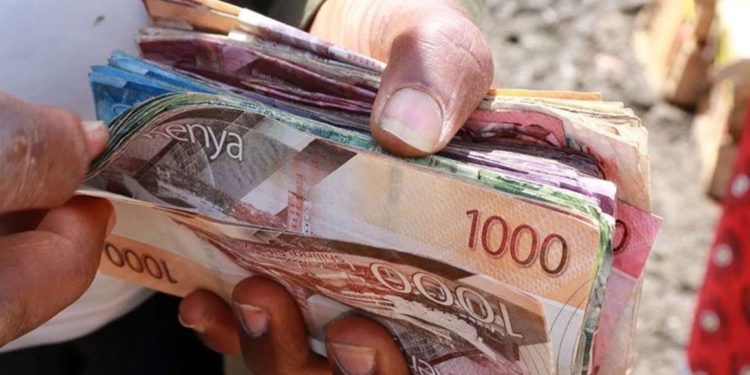Kenya’s ballooning public debt servicing costs are set to constrict the nation’s fiscal maneuverability, hampering its ability to finance critical development initiatives. The strengthening of the Kenyan Shilling against the US Dollar has led to a significant reduction of KES 1.2 trillion in the external debt stock and a reduction of KES 316.9 billion in total interest charges, positively impacting the country’s external debt burden. However, the overall public debt expenditures remain staggeringly high, underscoring the pressing need for fiscal reforms and prudent debt management strategies.
The Kenyan government is grappling with a mounting fiscal predicament as public debt servicing costs continue to escalate, straining the nation’s financial resources and curtailing its capacity to fund essential development projects. According to a report by the Public Debt and Privatization Committee, the Consolidated Fund Service (CFS) expenditures, which encompass mandatory government expenditures such as debt service payments and pension obligations, are projected to reach a staggering KES 2.06 trillion in the 2024/25 fiscal year.
This colossal figure is equivalent to a staggering 135 percent of the recurrent budget and 284 percent of the development budget for the same fiscal year, highlighting the urgent need to align these expenditures with national development priorities. The report underscores the risk posed by these burgeoning expenditures to the effective implementation of critical government expenditures and long-term plans.
The committee’s findings reveal that public debt service expenditures will comprise a staggering 90 percent of the CFS expenditures, underscoring the increasing role of the Public Debt Management Unit in managing these mandatory expenditures. Despite being established under Section 62 of the Public Finance Management Act, 2012, the unit lacks operational independence, potentially impacting its efficiency in fulfilling its mandate outlined in Section 63 of the same act.
While the recent strengthening of the Kenyan Shilling against the US Dollar has had a positive impact on the country’s external debt burden, the overall public debt situation remains precarious. The appreciation of the exchange rate from KES 161.36 to KES 130.78 between January 2024 and May 2024 resulted in an estimated reduction of the external debt stock by KES 1.2 trillion and a reduction in total interest charges by KES 316.9 billion.
However, the report highlights several concerning developments that underscore the need for urgent fiscal reforms and prudent debt management strategies. For instance, the National Treasury assumed the role of the primary debtor for the debt owed by Kenya Airways PLC in the 2023/24 fiscal year, resulting in the creation of a liability without a corresponding asset, thus increasing the burden of repayment.
Additionally, the report notes with concern the increased cost of the government’s overdraft facility at the Central Bank of Kenya (CBK). In the 2023/24 fiscal year, interest payments on the overdraft facility surged by KES 4.2 billion to KES 12.6 billion, exacerbating the strain on public finances.
The committee’s report also highlights the lack of provisions under the Public Finance Management Act, 2012, to regulate the Consolidated Fund Service (CFS) expenditures, despite being the largest expenditures of the government. This legislative gap creates a loophole in the management of these critical expenditures, potentially undermining transparency and accountability.
In response to these findings, the Public Debt and Privatization Committee has issued a series of recommendations aimed at addressing the fiscal challenges and promoting sustainable debt management practices. These include conducting a comprehensive review of CFS expenditures, enhancing the operational efficiency of the Public Debt Management Office, and undertaking regular macroeconomic reviews to ensure fiscal and monetary policies operate in synergy.
Furthermore, the committee has called for a review of the cost and usage of the overdraft facility, the submission of regulations to guide its utilization, and a detailed report on the use of the KES 200 billion allocated for the redemption of treasury bills shortfall in the 2023/24 fiscal year.
Transparency and accountability are also emphasized, with the National Treasury being urged to provide full details and impact assessments related to the assumption of Kenya Airways’ guaranteed debt. Moreover, the committee has recommended that Kenya Airways PLC submit a comprehensive turnaround strategy and measures to replenish the public resources utilized in the payment of guaranteed debt, cash bailouts, and expenses related to the assumed debt.


















